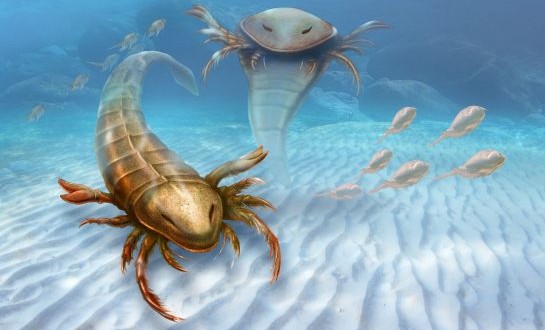Meet Pentecopterus, a new predator from the prehistoric seas.
Scientists have discovered the fossilised remains of a giant sea scorpion which lived 467 million years ago during a dig in north-east Iowa.
It was one of the most powerful ocean predators of its time, with an exoskeleton “helmet” shielding its head, a sleek narrow body, and large grasping limbs for trapping prey. Scientists named the beast Pentecopterus decorahensis, after the “penteconter”– an ancient Greek ship rowed by 50 oarsmen that saw service in the Trojan War.
Although they look like relatives of lobsters, sea scorpions, or eurypterids, were the ancestors of modern spiders.
Lead researcher Dr James Lamsdell, from Yale University, said: “The new species is incredibly bizarre. The shape of the paddle – the leg which it would use to swim – is unique, as is the shape of the head.”
The creature, described in the journal BMC Evolutionary Biology, was identified from more than 150 fossil fragments excavated from the Winneshiek Shale in north-east Iowa, in the US.
Some of the body segments suggest a total length of up to 1.7m, making it the largest known eurypterid from its era.
Agencies/Canadajournal
 Canada Journal – News of the World Articles and videos to bring you the biggest Canadian news stories from across the country every day
Canada Journal – News of the World Articles and videos to bring you the biggest Canadian news stories from across the country every day



